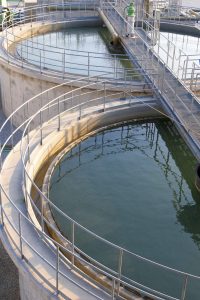In a final rule, the EPA has modified scores of sampling and analysis procedures that must be used by states, municipalities, tribes, publicly owned treatment works (POTWs), and industrial dischargers that are required by the Clean Water Act (CWA) to monitor water quality, meet pollutant limits, and report to regulatory authorities.
The changes include new and revised EPA methods (including new and/or revised methods published by voluntary consensus standard bodies (VCSB), such as the American Society for Testing and Materials (ASTM) International and the Standard Methods (SM) Committee); updated versions of currently approved methods; methods reviewed under the alternate test procedures (ATP) program; clarifications to the procedures for EPA approval of nationwide and limited-use ATPs; and amendments to the procedure for determining the method detection limit (MDL) to address laboratory contamination and better account for intralaboratory variability.
All modifications take effect September 27, 2017.
NPDES permits
The changes will likely affect many holders of National Pollutant Discharge Elimination System (NPDES) permits. Regulatory authorities issue NPDES permits with conditions designed to ensure compliance with CWA technology-based and water quality-based requirements. These permits may include restrictions on the quantity of pollutants that may be discharged as well as pollutant measurement and reporting requirements.
If the EPA has approved a test procedure for analysis of a specific pollutant, the NPDES permittee must use an approved test procedure (or an approved ATP if specified by the permitting authority) for the specific pollutant when measuring the required waste constituent. Similarly, if the EPA has established sampling requirements, measurements taken under a NPDES permit must comply with these requirements.
Readers are advised to see if they are included in the list of parties affected by the rule and if any testing methods they now use have been modified. It is particularly important to check with permitting authorities to determine if the modification alters requirements in existing permits.
Gas chromatography
Many of the changes affect the use of gas chromatography, the technique for environmental analyses most widely used in field and laboratory analysis. Chromatography separates closely related components of complex mixtures. Among the specific methods amended in the rule, which employ gas chromatography, are Method 608.3 for organochlorine pesticides and polychlorinated biphenyls (PCBs); Method 624.1 for purgeable organic pollutants in industrial discharges; SM 6200 (B, C)-2011 for volatile organic compounds; SM 6640 B-2006 for acidic herbicide compounds; and ASTM D 5257-1 for dissolved hexavalent chromium.
ATPs and method detection limit
Regarding approval of ATPs, the final rule clarifies that EPA’s regional offices, not the states, approve the use of ATPs. The previous regulatory language mistakenly included the phrase “or the permitting authority” in specifying which authority approves ATPs. The rule deletes the erroneous phrase.
The rule also revises the procedure for determining the MDL, primarily to address laboratory blank contamination and to better account for intralaboratory variability. Variables addressed include those associated with background levels of contamination and the use of multiple instruments by a laboratory. Also, laboratories will be required to run MDL samples and method blanks every quarter, replacing the requirement to conduct annual running.
The final rule was published in the August 28, 2017, FR.

